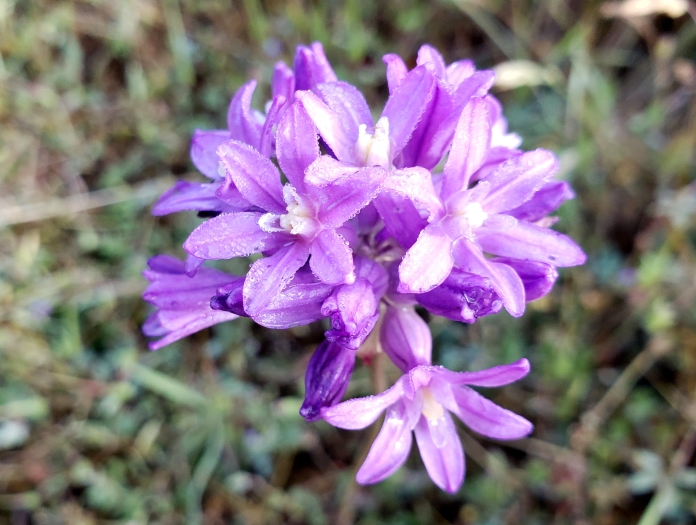Round-Tooth Snake-Lily
(Dichelostemma multiflorum)
Round-Tooth Snake-Lily (Dichelostemma multiflorum)
/
/

Mary K. Hanson
CC BY 4.0
Image By:
Mary K. Hanson
Recorded By:
Copyright:
CC BY 4.0
Copyright Notice:
Photo by: Mary K. Hanson | License Type: CC BY 4.0 | License URL: http://creativecommons.org/licenses/by/4.0/ | Rights Holder: Mary K. Hanson | Publisher: iNaturalist | Date Created: 2021-04-26T08:58:56-07:00 |






















Estimated Native Range
Summary
Dichelostemma multiflorum, commonly known as round-tooth snake-lily, is a perennial herb native to the grasslands, open woodlands, and chaparral of California and Oregon. It typically grows in well-drained soils on hillsides, mountains, and in inland grassy areas. This wildflower features a tall, erect stem that can reach up to 3 feet in height, topped with a dense, spherical inflorescence composed of up to 35 striking purple or pink-purple flowers. Each flower has a starlike corolla with six petal-like lobes and exudes a subtle charm when in bloom from late spring to early summer. The foliage is slender and grass-like, adding to its delicate appearance.
Round-tooth snake-lily is valued for its ability to attract pollinators such as bees and butterflies, making it a beneficial addition to naturalistic plantings and wildflower gardens. It is often used in borders or as a focal point due to its unique flowering structure. This plant prefers full sun to light shade and requires minimal water once established, making it suitable for drought-tolerant landscapes. While generally low-maintenance, it can be susceptible to root rot in poorly drained soils. There are no widely known cultivars of this species, but its natural form is sufficiently ornamental to stand out in cultivation.CC BY-SA 4.0
Round-tooth snake-lily is valued for its ability to attract pollinators such as bees and butterflies, making it a beneficial addition to naturalistic plantings and wildflower gardens. It is often used in borders or as a focal point due to its unique flowering structure. This plant prefers full sun to light shade and requires minimal water once established, making it suitable for drought-tolerant landscapes. While generally low-maintenance, it can be susceptible to root rot in poorly drained soils. There are no widely known cultivars of this species, but its natural form is sufficiently ornamental to stand out in cultivation.CC BY-SA 4.0
Plant Description
- Plant Type: Herb, Bulb
- Height: 1-1.5 feet
- Width: 0.5-1 feet
- Growth Rate: Moderate
- Flower Color: Blue, Purple, White
- Flowering Season: Spring, Summer
- Leaf Retention: Deciduous
Growth Requirements
- Sun: Full Sun
- Water: Low, Medium
- Drainage: Fast
Common Uses
Bee Garden, Butterfly Garden, Deer Resistant, Drought Tolerant, Low Maintenance
Natural Habitat
Native to the grasslands, open woodlands, and chaparral of California and Oregon
Other Names
Common Names: Wild Hyacinth, Roundtooth Snakelily, Blue Dicks
Scientific Names: , Dichelostemma multiflorum, Brodiaea grandiflora var. brachypoda, Brodiaea multiflora, Brodiaea parviflora, Dichelostemma parviflorum, Hookera multiflora, Hookera parviflora,
GBIF Accepted Name: